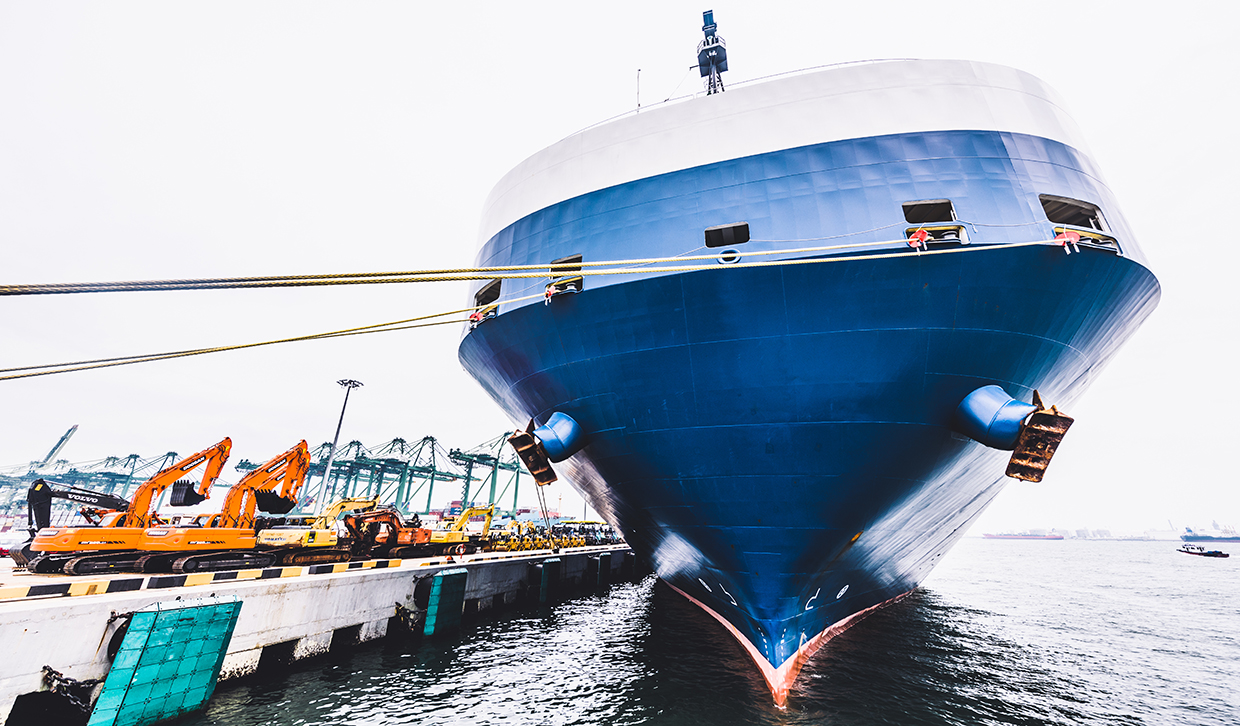In the last issue of SRS E-Bulletin, we featured the
TSIB Safety Flyer - Accidents Involving Mooring Rope . The flyer is a timely reminder for ships' crew and ship managers/operators to
be vigilant and to put in place safe working practices and procedures to safeguard against
unsafe acts. There has been a number of incidents reported involving mooring ropes and
these incidents had led to injuries, some fatal.
In this issue, we will feature a fatal incident involving mooring rope to remind and reiterate
the importance of safe working practices and safety culture on board ships.
What happened?
The accident occurred on board a tug towing a barge carrying granite in bulk. The unloading
of the granite involved beaching the barge. To maintain the barge's beached position during
cargo unloading operation, the barge needs to be secured on the side of the tugboat using the
tug's mooring ropes (one headline and one stern line). The stern line was passed via the
underside of the side guard preventer pipe, on the port side at the stern of the tug, instead of
being passed through a closed fairlead.
With an onset of adverse weather, the tug and barge rolled and pitched in tandem moderately
and, at times, heavily. This caused the headline and stern line to slacken and tighten
alternately. At one point during the tug's rolling and pitching, the stern line slipped out from
the preventer pipe, sprang sideways and hit the back of the head of the Chief Officer, who
after the mooring operation was walking on the open deck of the tug with the mooring crew,
towards the tug's accommodation.
The Chief Officer suffered a whiplash injury and fell unconscious. He was transferred to the
hospital. He subsequently succumbed to his injuries.
The occurrence was a result of the inappropriate use of the side guard preventer pipe as a
fairlead for the mooring rope to secure the barge to the tug.
Conclusion
The investigation into the incident concluded that the occurrence was a result of incorrect and
inappropriate lead being used for the stern line, i.e. led via the side guard preventer pipe
instead of the closed fairlead to secure the barge to the tug, an unsafe act.
Also, there was a lack of safety awareness on board to report an unsafe act, such as the use
of side guide preventer pipe for mooring operations instead of using the closed fairlead.
The following safety recommendations have been issued:
- Ensure that equipment on board are used as designed and that unsafe acts on board are reported to the company. Company should take appropriate steps to ensure that the side guard preventer pipe is not used as a fairlead for towing and subsequent beaching operations. The purpose of the preventer pipe should also be clearly marked on board their fleet of tugs.
- To take into account publication like the Code of Safe Working Practices (COSWP) when reviewing the company's Safety Management System (SMS) while paying particular attention to the conduct of risk assessment for non-routine operations. This is to increase awareness of whiplash injuries that may be caused by mooring ropes under strain. For more information, please refer to MPA Shipping Circular No.25 of 2017.
- Implement a system to document the training of officers and crews, and their compliance with company's risk assessment procedures, taking into account revisions to the company's SMS.
- Ensure that ships carry safety publications and safety guides / codes where applicable for reference in the conduct of safe operations on board where appropriate.



